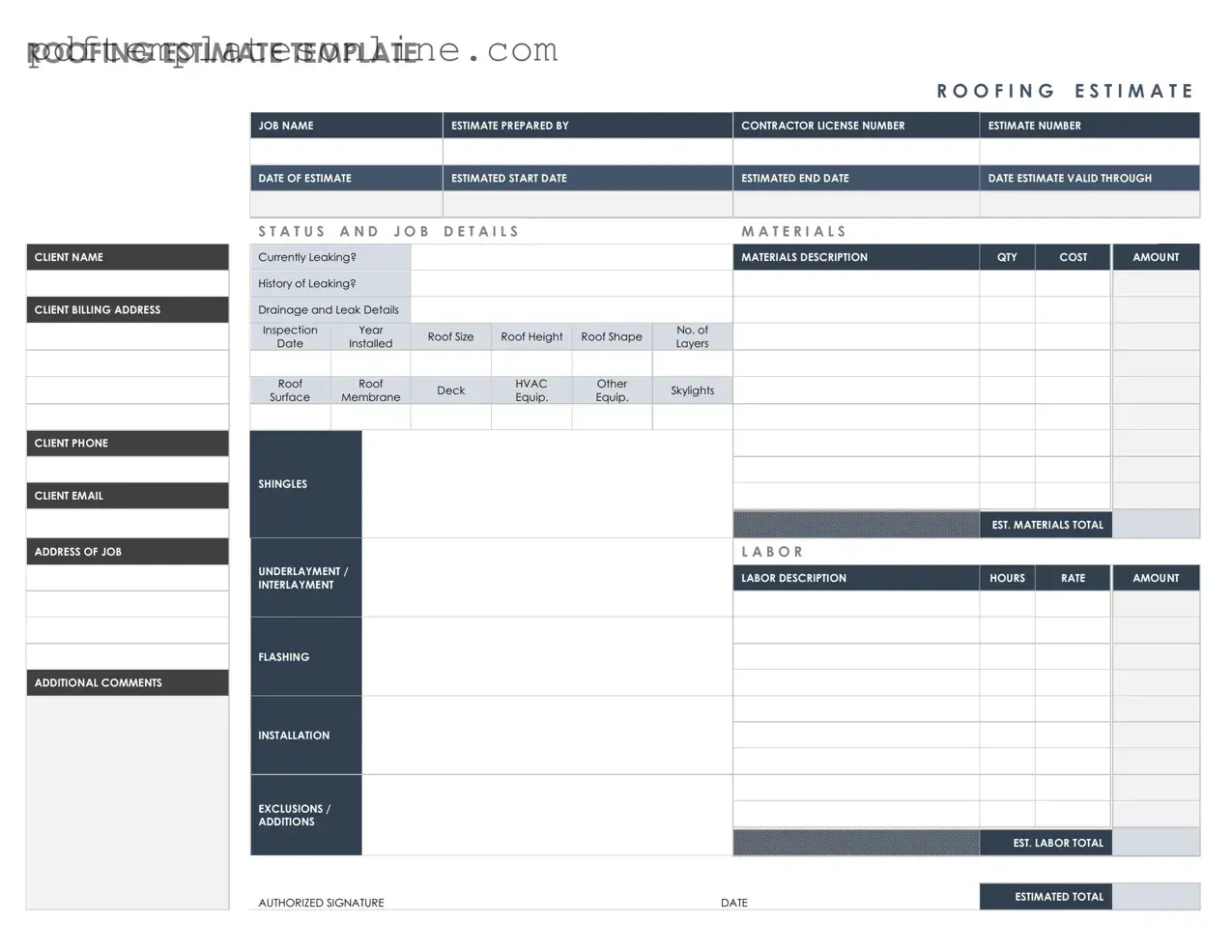Filling out a roofing estimate form can seem straightforward, but many individuals make common mistakes that can lead to misunderstandings or inaccurate estimates. One frequent error is failing to provide complete contact information. Without a valid phone number or email address, roofing companies cannot follow up for clarifications or updates.
Another common mistake is neglecting to specify the type of roofing material desired. Different materials, such as asphalt shingles, metal, or tile, come with varying costs and installation requirements. Omitting this detail can result in estimates that do not accurately reflect the homeowner's preferences.
Many people also overlook the importance of including the size of the roof. The square footage directly influences the cost of materials and labor. An estimate based on inaccurate measurements can lead to unexpected expenses down the line.
Inadequate information about the roof's current condition is another pitfall. Homeowners should describe any existing damage or issues, such as leaks or structural problems. This information helps contractors assess the situation and provide a more accurate estimate.
Some individuals fail to mention specific features of their roofs, such as skylights, chimneys, or vents. These elements can complicate the installation process and affect the overall cost. Providing a detailed description ensures that the estimate reflects all necessary work.
Another mistake is not indicating the desired timeline for the project. If a homeowner needs the work completed by a certain date, this should be clearly stated. Roofing companies often have varying schedules, and knowing the urgency can affect the estimate and availability.
Homeowners sometimes forget to ask about warranties and guarantees. Including questions about these protections in the estimate form is crucial. This information can significantly influence the decision-making process and provide peace of mind.
Some people submit forms without reviewing them for errors. Typos or missing information can lead to confusion and delays. Taking a moment to proofread can prevent these issues and ensure clarity.
Another frequent error is not researching the roofing company beforehand. Homeowners should verify the contractor’s credentials, reviews, and past work. This diligence can prevent misunderstandings and ensure a smoother process.
Lastly, individuals may not compare multiple estimates. Relying solely on one estimate can lead to missed opportunities for better pricing or services. Gathering several estimates allows homeowners to make informed decisions and choose the best option for their needs.
